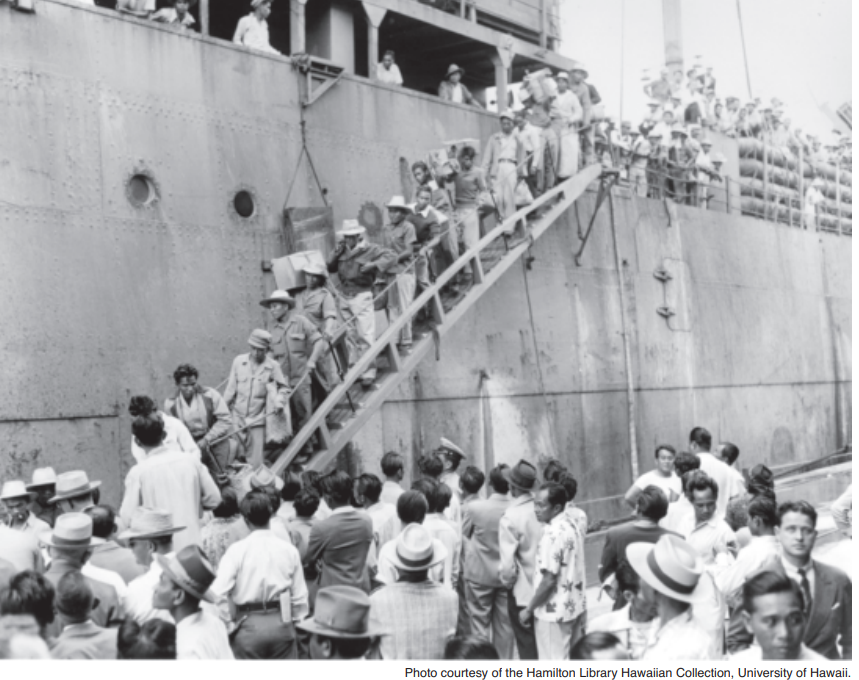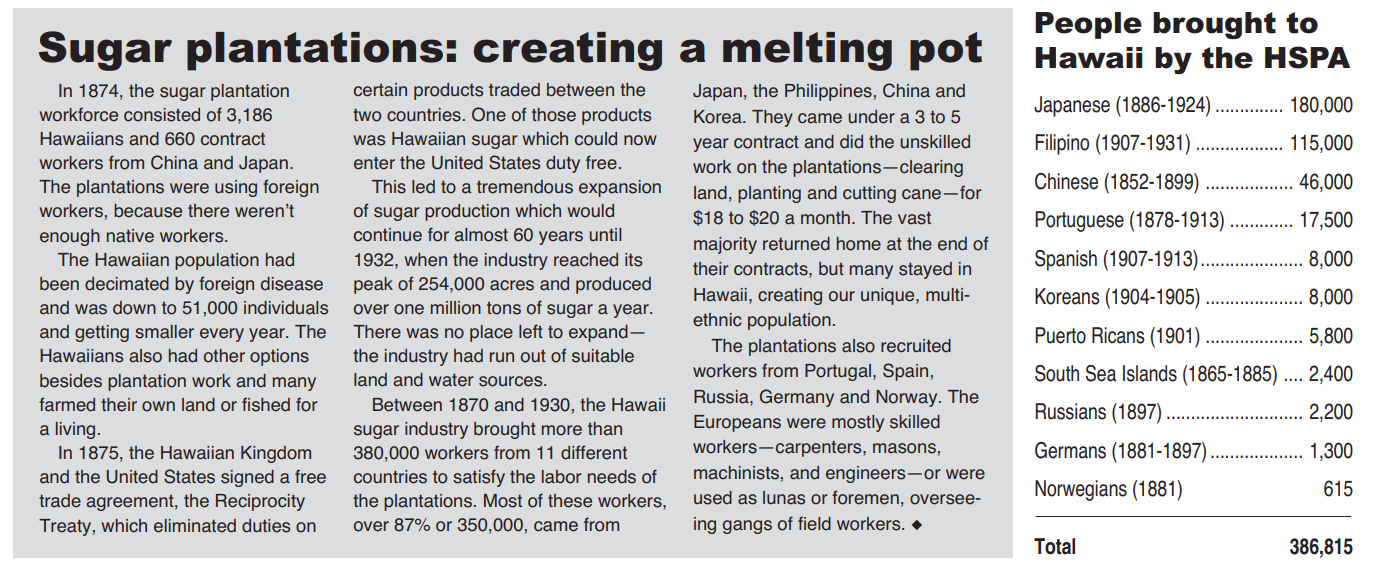Leaders developed
The ILWU understood that earlier attempts to organize sugar workers failed because the unions consisted of a handful of leaders at the top and the workers had no lasting organization. The sugar industry could easily destroy the early unions by attacking the leaders, which was done by spreading rumors or by charging them with crimes and deporting them.
The 1946 sugar strike would be different. The ILWU developed a democratic union structure that reached into every plantation gang and plantation camp. Every member had a job to do, whether it was walking the picket line, gathering food, growing vegetables, cooking for the communal soup kitchens, printing news bulletins, or working on any of a dozen strike committees.
There was a committee that ran the communal soup kitchens to feed the striking workers and their families. This was cheaper than each family cooking their own food, and gave people a sense of community and solidarity. It also helped bring the ethnic groups together as they shared and ate each other’s food. The food was supplied by hunting, fishing, and farming committees. A finance committee kept track of the money and bought food and supplies in bulk.
A publicity committee kept workers informed throughout the strike. Members of that committee learned how to write leaflets and operate a printing press. A morale committee showed movies and arranged entertainment; a transportation committee provided rides; a sports committee organized tournaments.
There were dozens of committees and each required a chairperson, a vicechair, and a secretary to takes notes. In this way, hundreds of ordinary sugar workers were put in positions of leadership. They learned how to speak in public, how to run a meeting, and how to run an organization. During the strike, the sakada and their fellow sugar workers learned new skills and developed as leaders.
Changed forever
When the strike ended, the workers went back to their jobs—cutting cane, fixing irrigation ditches, driving cane haulers, or running the mills. The jobs were the same, but the workers were changed forever. They now had an organization of their own, and the skills to run that organization.
The sakada also worked in the pineapple industry, in hotels, in construction, and in many other occupations—but the story is very similar to what happened in the sugar industry.
The Sakadas played an important part in the working class movement that would transform Hawaii from a plantation society to a democratic and progressive state. The Sakadas resisted the abuse and unfair treatment on the plantations. They overcame differences and united with workers of other races in a common struggle for dignity and justice. They joined unions, became leaders, and contributed their skills, energy, and dedication to the success of that movement.
The Sakadas can be proud of their 100 year history in Hawaii. ◆

Filipino immigrants arrive in Hawaii, c. 1946.

